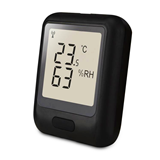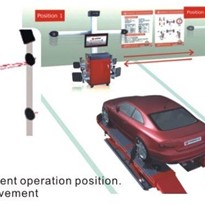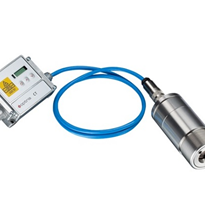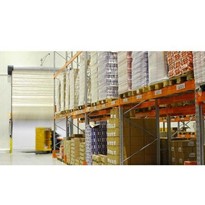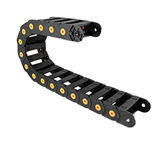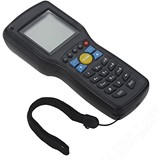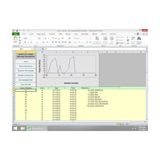Retailers are closer to consumers than suppliers and are more aware of shifting trends that can determine the demise of one product and the potential for another.
Data sharing between suppliers and retailers can lead to insights that add value to both parties. The benefits as a result from these insights are detailed in our previous retail blog titled Key to Retail Success: Data Sharing. However, there are a number of challenges preventing these benefits from being fully realised.
In this blog, we take a look at two studies conducted 3 years apart between retailers and suppliers and cover the main changes as well as continued challenges around data sharing.
According to the 2010 Retailer/Supplier Shared Data Study produced by CGT and RIS that involved over 100 retailer and suppliers, both parties saw the value in data sharing and recognised the ROI it provided. However, the study revealed that it would be a long time before the majority of trading partners would be able to reap all of the benefits. Some of the challenges faced when it came to data sharing included:
- Lack of adequate technology for retailers. The sharing of data required manual processes, of which 56 per cent still used, such as Excel spreadsheets, PDF reports and flat files. There were no applications to streamline the sharing of data downstream to suppliers.
Why this doesn't work: It's time consuming, error prone and burdens staff and management who could be involved in more valuable activities for the business.
- Data sharing management was not an enterprise wide approach. There was a lack of a single owner with retailers. The responsibility was siloed amongst various departments, with 29 per cent of respondents still using the ‘every team for themselves' approach.
Why this doesn't work: These silos not only create confusion and duplication, but the lack of a centrally managed repository of data means neither the supplier nor the retailer can have one version of the truth. The accuracy of insights drawn from this data is questionable.
- A number of retailers were charging suppliers for their data or simply just not sharing it.
Why this doesn't work: Data sharing should not be looked upon as a revenue stream, it should be viewed as a collaborative effort that improves both businesses. A whopping 31 per cent of retailer respondents did not share their daily downstream data with suppliers while 9 per cent of retailers did.
- 13 per cent of retailers shared their online sales data and a low 6 per cent shared their loyalty/card data with their suppliers. Retailers' reluctance to show loyalty/card data meant that suppliers were unable to tie customer demographics to transactional data.
Why this doesn't work: Without this connection, it's hard for suppliers to identify which customer groups are purchasing their products, as well as:
- what promotions groups respond to and through which channels;
- which products most often end up in the same market basket; and
- the impact of price on various customer groups.
The above insights are needed to turn one-off customers into loyal ones, increase existing customer spend and attract premium customers; all of which bring benefits to retailers just as much as suppliers.
The 2010 study showed that the top benefits recognised from data sharing were
- for retailers, getting the right product on the shelf, lowering inventory levels and reducing out-of-stocks.
- for suppliers, meeting supply chain and execution challenges for suppliers however the highest rated benefit was sensing product acceptance in new product launch execution.
Now, let's flash forward to the 2013 Retailer/Supplier Shared Data Study conducted by CGT and RIS. This study revealed that
- 62 per cent of suppliers and retailers that had committed to collaborative data sharing were seeing clear ROI, as they were able to control out-of-stock issues and manage inventory through forecasting and replenishment.
- Ownership of data sharing was at an executive level. This meant data sharing was becoming more standardised across the whole enterprise with more retailers adopting technology platforms to aid in producing and sharing downstream data.
- There still were retailers reluctant to share data with their suppliers. However, that number was decreasing as more retailers saw their competitors sharing data and gaining success.
- Some retailers were still charging suppliers for their data.
- Loyalty card and online sales were considered the leading data type to be shared.
- Retailers had a strong interest in social media data.
- There was a shift to combine shared data with big data.
- Retailers believed data sharing came with the risk of that data being obtained and used by competitors. With the increased capacity to analyse data internally, retailers relied less on shared data.
The structure of the data files shared can vary greatly depending on the retailer and the task of managing all this data can be quite onerous to the supplier. Often, both suppliers and retailers lack the the analytical tools and integration capabilities needed to use data effectively.
In order to overcome data challenges, suppliers are deploying Business Intelligence software that can extract and centralise data from a variety of sources and in a variety of formats, to present information in a timely yet comprehensive way. The capacity to view and analyse accurate data means greater insight to the potential opportunities and benefits to retailers and suppliers. Rather than a fragmented picture of what's happening in the store, a holistic view of the customer and what products they are buying starts to emerge.
To learn more on how you can gain insight from your data and avoid costly errors in stock management, download the free white paper for Suppliers of Retail Products.





